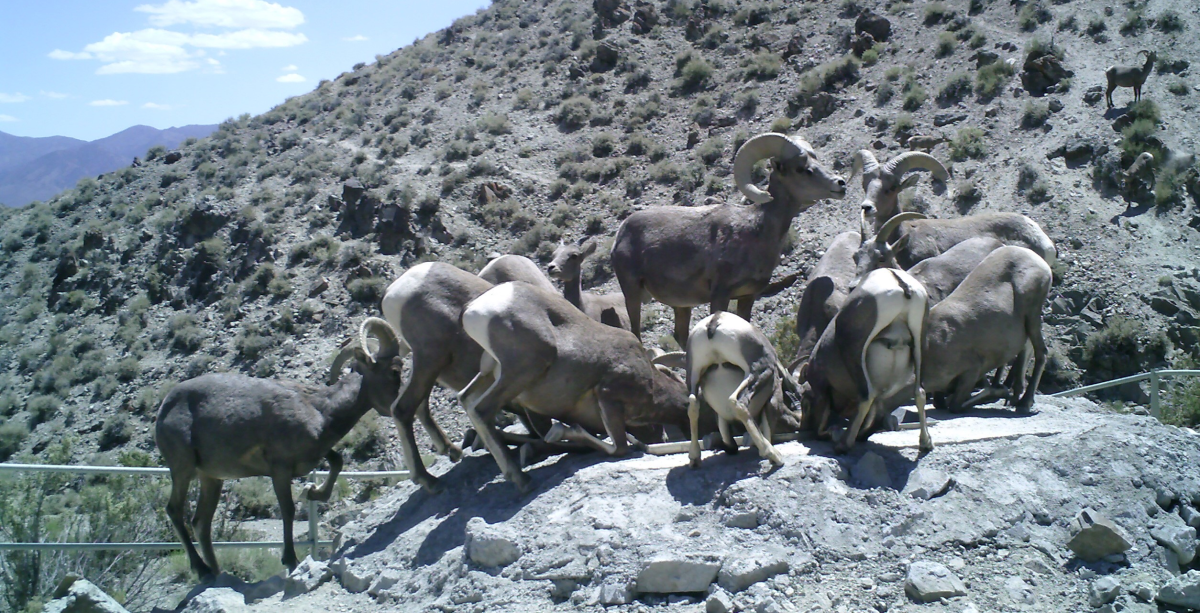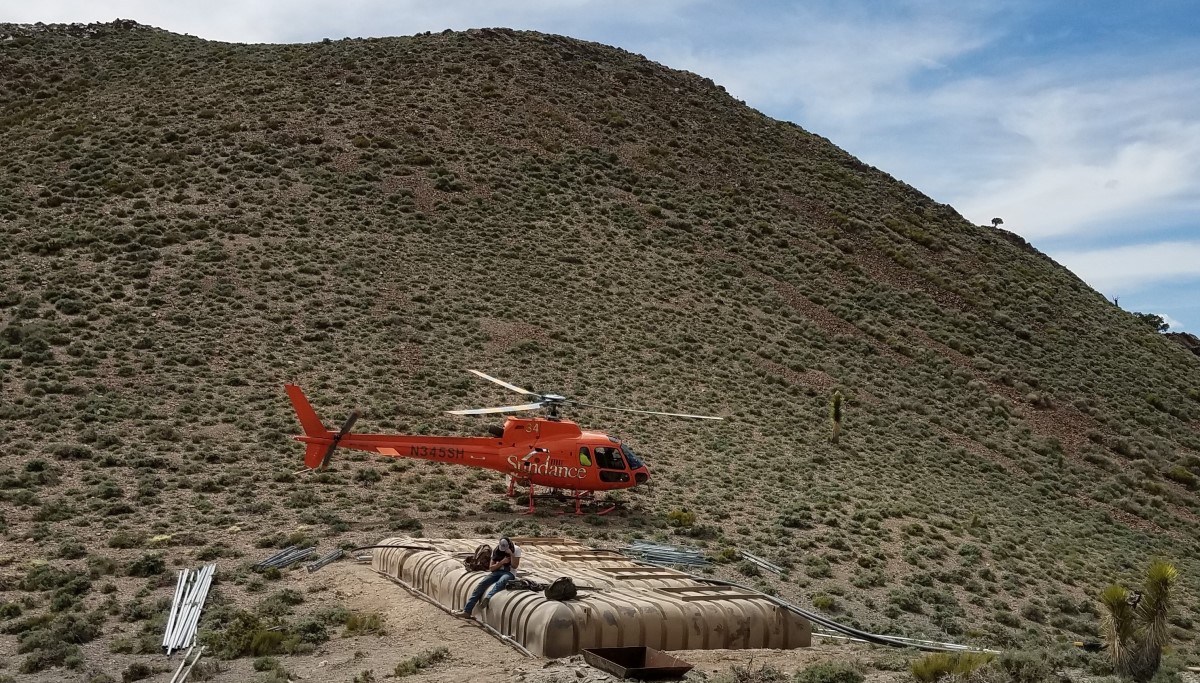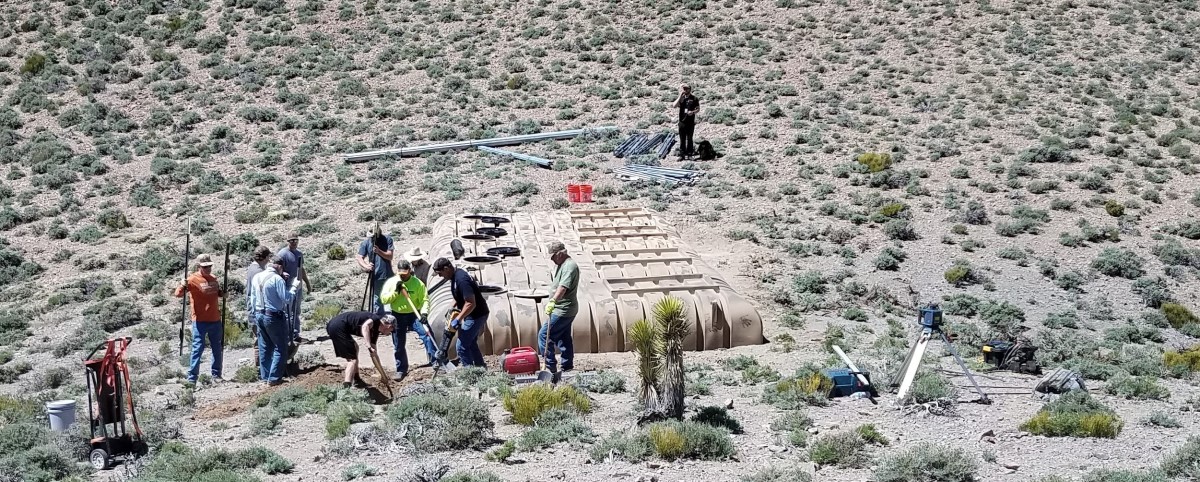In June, the Biden Administration’s Environmental Protection Agency and Army Corps of Engineers committed to repealing and replacing the “Waters of the U.S.” rule that defines which waters and wetlands should be protected under the Clean Water Act. The agencies announced a two-part plan in July to revoke the “Navigable Waters Protection Rule” while revising WOTUS. Learn more.
Bipartisan Senate Infrastructure Bill Contains Critical Investments in Conservation
The Infrastructure Investment and Jobs Act shows lawmakers on Capitol Hill are listening to hunters and anglers
Today, a bipartisan cohort of 21 lawmakers introduced to the U.S. Senate the Infrastructure Investment and Jobs Act, which includes important investments in conservation and natural infrastructure that will benefit hunters, anglers, and rural communities for years to come. The Theodore Roosevelt Conservation Partnership’s policy team has examined the bill text and identified several key policy and funding priorities that our community pushed for, including funding for wildlife crossings, national forest road repair and maintenance, drought resiliency, improved water quality, severe weather resilience, and habitat restoration.
“Now more than ever, we appreciate the diligent, bipartisan process undertaken by the Senate to develop a legislative package that both reauthorizes critical programs and takes additional steps to acknowledge the relationship between infrastructure and our natural environment,” said Whit Fosburgh, president and CEO of the TRCP. “From the availability of funds for wildlife crossings to restoration programs that will benefit large ecosystems like the Great Lakes and Chesapeake Bay, the legislation represents our nation’s continued commitment and responsibility to our lands, waters, and wildlife. We look forward to working with the Senate and House to advance the critical provisions within this bill.”
The TRCP advocated for several critical provisions in the legislation that will improve habitat connectivity for wildlife, invest in public lands and access, and restore and conserve aquatic habitats while restoring water quality.
Among the biggest wins is a first-of-its-kind $350-million grant program to fund the construction of roadway crossings that reduce wildlife-vehicle collisions and reconnect fragmented migration corridors.
The bipartisan bill included another top priority for TRCP and our partners with $250 million for the Legacy Roads and Trails Remediation Program, which will help address maintenance and repair needs on the Forest Service’s extensive network of roads and trails. This investment will not only improve public land access for hunters and anglers, but also safeguard fish habitats from harmful runoff and pollutants that can result when roads fall into disrepair.
Lawmakers also delivered for sportsmen and sportswomen by including the reauthorization of the Sport Fish Restoration and Boating Trust Fund, providing states with funding for fisheries projects, boating access, and aquatic education from a portion of fishing license, gear, and boat fuel sales.
Hunters and anglers stand to benefit further from a substantial increase in funding bringing the Clean Water State Revolving Fund Program, which supports estuary restoration and stormwater management projects to improve aquatic habitat and water quality, up to a grand total of $14.65 billion. Complementing this program is the bill’s $400-million allocation for WaterSMART. With $100 million set aside for natural infrastructure solutions, this boost will help mitigate the impacts of drought, create new habitat, and improve water quality.
Another key investment in resiliency and natural infrastructure is the $1.4 billion allocated by the bill to the Promoting Resilient Operations for Transformative, Efficient, and Cost-Saving Transportation (PROTECT) Grant Program, intended to reduce the risks posed to vulnerable communities by significant weather events.
The TRCP is also encouraged to see $2.2 billion allocated for the Federal Land Transportation Program, of which the Forest Service will see the largest percentage increase in funding among all federal agencies. Our national forests will likewise benefit from bill’s inclusion of the Repairing Existing Public Land by Adding Necessary Trees (REPLANT) Act, which will renew tree cover and address the growing backlog of nearly two million acres in need of replanting.
Other wins for conservation include:
- $300 million for Drought Contingency Planning to improve Colorado River Basin management
- $492 million for the National Oceans and Coastal Security Fund to improve coastal resiliency
- $800 million for the National Culvert Removal, Replacement, and Restoration Grant Program, which will improve habitat connectivity and improve survival of anadromous fish
- $1.9 billion for the Aquatic Ecosystem Restoration Fund
- $300 million for the Emergency Watershed Protection Program
- $1.7 billion for EPA Geographic Programs, essential collaborative initiatives to restore unique landscapes across the nation
- $11.2 billion for the Abandoned Mine Land Reclamation Fund to restore habitat affected by resource extraction
- $4.67 billion for orphaned well site plugging, remediation, and reclamation
“The Infrastructure Investment and Jobs Act represents a significant opportunity to make critical investments in fish and wildlife habitat, sporting access, and the future of our hunting and fishing traditions,” said Fosburgh. “Sportsmen and sportswomen appreciate the leadership that produced this legislation and for the attention that lawmakers have shown to our community’s priorities. We hope this bill will enjoy quick passage in the full Senate and look forward to working with lawmakers in the House to ensure that it can be sent to the president’s desk without delay.”
Photo: Paulo O via Flickr
House Votes to Increase Key Conservation Funds that Benefit Waterfowl, Deer, and Sportfish
The chamber passed a “minibus” package of appropriations bills outlining funding for the federal agriculture, energy, water, environment, and public land agencies, including investments in conservation that will affect hunting and fishing in America
In a 219 – 208 floor vote this afternoon, the House passed a “minibus” package of appropriations bills for fiscal year 2022, including those that fund conservation at the federal agencies overseeing agriculture, energy, water, the environment, and public lands.
Experts at the Theodore Roosevelt Conservation Partnership have scrutinized these funding levels and identified important increases in several areas, including drought resiliency, wetlands conservation, private land conservation, big game herd health, and habitat restoration in the Everglades, Chesapeake Bay, and Upper Mississippi River watershed.
“We’re pleased to see the House supporting robust and increased investment in conservation at a time when public land visitation is up, participation in hunting and fishing is growing, and our natural resources face many challenges, including climate change, drought, development, invasive species, wildfire, and disease,” says Whit Fosburgh, president and CEO of the TRCP. “We have to create certainty for the federal workers who keep hunters and anglers safe on our public lands and waters and give them the resources to improve habitat and stave off risk—rather than scramble to recover after losses or watch maintenance backlogs grow. This requires investment. We look forward to working with the Senate to secure these funding levels and seize additional opportunities to commit to conservation in fiscal year 2022.”
Some highlights of the appropriations package include:
- $25 million for the Bureau of Reclamation’s WaterSMART Drought Response Program, which is $10 million more than FY21
- $350 million for Army Corps construction projects within the South Florida Ecosystem Restoration Program—an increase of $100 million over FY21, although less than half of what the TRCP and conservation partners had pushed for to expedite completion of authorized Everglades restoration projects
- $50 million for North American Wetlands Conservation Act programs, up by $3.5 million
- A $65-million bump in funding for conservation technical assistance available to private landowners who enhance habitat, bringing total program funding to $894 million
- A $44-million increase for Bureau of Land Management habitat programs, bringing the total to $233 million
- $33.5 million for Upper Mississippi River restoration
- $15 million for Chesapeake Bay watershed restoration at the U.S. Fish and Wildlife Service
- $10 million for the Animal and Plant Health Inspection Service to assist state agencies in CWD containment
While the funding measure takes an important step in growing federal investment in several areas important to wildlife, conservation needs continue to outpace funding. Challenges ranging from chronic wasting disease to drought are affecting hunters, anglers, landowners, and fish and wildlife. The TRCP looks forward to working with lawmakers in the Senate to support these critical funding needs for FY22 and years to come.
Photo by RimLight Media
New Report Identifies Opportunities to Advance Natural Infrastructure
The TRCP and National Wildlife Federation release a report outlining opportunities for two key federal agencies, the Federal Emergency Management Agency and the Department of Housing and Urban Development, to improve and promote programs that use natural infrastructure
A new white paper issued by the National Wildlife Federation, in partnership with the Theodore Roosevelt Conservation Partnership, highlights the importance of nature-based solutions for improved disaster preparedness and more climate resilient communities. The paper identifies opportunities for two key federal agencies, the Federal Emergency Management Agency and the Department of Housing and Urban Development, to improve and promote programs that use natural infrastructure as win-win solutions for vulnerable communities, fish and wildlife habitat, and the outdoor recreation economy that relies on healthy lands and waters.
“Nature-based resilience and hazard mitigation projects have demonstrated time and again that they are an effective and essential solutions that save lives, homes, and livelihoods. Natural solutions harness the power of nature — including wetlands, forests, and floodplains — to act as an effective defense system against the growing threats of flooding, wildfires, and drought,” said Jessie Ritter, director of water resources and coastal policy at the National Wildlife Federation. “Increasing federal resources for nature-based projects is critical, but only part of the puzzle. Federal agencies must address current policy and capacity barriers to the use of nature-based projects, enabling more communities, including the most socially vulnerable, to benefit from the protection and other services these features provide.”
“Federal agencies need to embrace innovation and nature-based approaches that stretch taxpayer dollars to provide many layers of benefits¬ — from stability and personal safety for residents of flood- and wildfire-prone communities to healthier wetlands, grasslands, and forests that provide outdoor recreation opportunities to all Americans,” said Christy Plumer, chief conservation officer for the Theodore Roosevelt Conservation Partnership. “It will require a shift, not only in mindset but also in policy, and this report will help the agencies identify opportunities for investment that already have support from the conservation community.”
More information on the TRCP’s natural infrastructure priorities can be found here.
An Inspiring Tale of Generosity and Stewardship to Help Nevada’s Bighorns
Hunters and conservation groups step up to support Nevada’s wild sheep in a time of need
In parts of the arid West, water is often the limiting factor for populations of desert bighorn sheep and other wildlife. Over the years, groups like the Fraternity of the Desert Bighorn, Nevada Bighorns Unlimited, and the Wild Sheep Foundation have partnered with the Nevada Department of Wildlife to build structures known as guzzlers. These manmade water sources provide a reliable supply of drinking water for all types of local wildlife and help to distribute sheep throughout the range. Typically, these water catchments are filled by collecting rain on an apron, but without adequate precipitation they need to be filled by helicopter or else they’ll run dry.
This year’s heat and drought, which has been prolonged and severe in southern Nevada, drove Fraternity of the Desert Bighorn president Clint Bentley to ask his fellow hunters and sheep fanatics for help. And—as usual—sportsmen and sportswomen rose to the challenge, making a huge difference for wild sheep and offering another extraordinary example of hunters and conservationists opening their wallets to support wildlife.
Here’s Clint’s story:
Like much of the West, Nevada has been hot and dry this summer. Simply put, there has been no habitat anywhere in the southern part of the state with any greenery whatsoever. Everything is totally brown and dead, so the nutritional value for our wild sheep is basically zero. That has been as big a concern to me as the lack of water, because we can haul water, but we can’t just replace their food-base.
What worries me most—and not just me, but Nevada Department of Wildlife and the Wild Sheep Foundation—is that this lack of nutrition and lack of water will cause our lamb survival rate and recruitment to plummet. These conditions are just devastating to the lamb crop.
In conditions like we’ve been experiencing lately, where there hasn’t been enough rainfall to replenish the guzzlers, we need to supplement them with water hauls, primarily using aircraft.

Between August 11 of last year through January 8 of this year, we hauled 167,000 gallons of water, with more than 160,000 gallons of that by helicopter. That amounts to somewhere between 800 and 1,000 helicopter trips to deliver water to 28 different guzzler sites on 13 different mountain ranges.
Then, in three weeks this June, we hauled another 71,000 gallons by helicopter to nine mountain ranges and 15 different sites. On June 24, 2021, we flew water surveillance flights to 16 different guzzler sites on three different mountain ranges and saw there would be an urgent need for additional water in early August.
At that point, however, we had totally depleted the FDB’s emergency water haul fund. I started that fund seven years ago, and we’ve been building it ever since because I knew we’d need it someday. But it doesn’t take very long to deplete a large sum of money when you start flying helicopters ten hours a day.
So, knowing the conditions on the ground and the state of our account—I think we had $4,000 left, which wouldn’t cover anything—something needed to be done to help our sheep.
The day after our water surveillance flight, I made a request on behalf of the Fraternity of Desert Bighorns at the Wild Sheep Foundation’s 13th Chapters and Affiliates Summit for any financial assistance to help us in the upcoming months of water hauling. I was secretly hoping to garner $50 to $60,000 from this request.
Instead, it received a response far beyond my hopes and expectations: WSF and NBU-Fallon each pledged $30,000 and 17 chapters and affiliates as well as two individuals combined to pledge another $122,000. The grand total amounted to $182,000.
As a result, on August 1st we will begin three days of recon flights to establish where we need to start hauling water. These funds will be going directly to keeping wild sheep on the mountain.

I still get tears in my eyes thinking of everyone who contributed. It has strengthened my faith in all of these groups and reestablished that we all really are in this for the benefit of wild sheep and all of the other wildlife that depend on these same guzzlers. It’s just so reassuring to see how everyone is truly committed to the same cause.
What’s important is not just that we can raise this amount of money, it’s how those funds will be used. That money is going to go into the ground to keep our wild sheep healthy. And these water hauls have already saved the day on two mountain ranges where the herds were in serious trouble. Sheep were going to start dying if we didn’t get water there, plain and simple.
Over the last 50 years, hunters and conservation groups have worked to increase Nevada’s wild sheep population from basically 2,000 to 12,000. At the same time, we’ve been able to augment sheep numbers in Texas, Utah, and Oregon. Clearly, the commitment that led to those successes is alive and well in our community.
I get overwhelmed every time I look at the list of those groups and individuals and see what everybody is willing to do for our wild sheep. I was just praying for $50 to $60,000 and then the response that we got it—well, it just chokes me up. What else can I say?

HOW YOU CAN HELP
CHEERS TO CONSERVATION
Theodore Roosevelt’s experiences hunting and fishing certainly fueled his passion for conservation, but it seems that a passion for coffee may have powered his mornings. In fact, Roosevelt’s son once said that his father’s coffee cup was “more in the nature of a bathtub.” TRCP has partnered with Afuera Coffee Co. to bring together his two loves: a strong morning brew and a dedication to conservation. With your purchase, you’ll not only enjoy waking up to the rich aroma of this bolder roast—you’ll be supporting the important work of preserving hunting and fishing opportunities for all.
Learn More
You have Successfully Subscribed!


